
Untamed Childhood Landscapes at Home

Contributor
- Topics: Nature is Good For You
Summer 2023
If you pause to reflect on a few of your best childhood memories, it is likely that at least one of them took place outside. Maybe your younger self spent meandering hours searching for agates on a winding beach or racing with your sibling through a field on a drizzly spring afternoon, the grasses high as your knees. For most of human history, childhood has been inextricably entwined with the outdoors; children have gravitated there instinctively, as they are able, to engage in the essential work of play.
While nature has long been a backdrop to the experience of growing up, today’s children are spending far less time outdoors, drawing concerns that something vital is lacking. The average American child, according to the Child Mind Institute, now spends between just four and seven minutes per day outside; in contrast, they spend seven hours indoors, on screens (Cohen 2023).
In the face of this new reality, any adult with a yard and a child they care about has a bold opportunity: to offer up some green space and nudge them back toward a more immersive experience in nature. Though admittedly home gardens are not usually the wild, untamed childhood landscapes of the past, they still have much to offer children. Whether tiny or sprawling, every yard offers children admission to a world they can escape into and grow in, if they are welcomed. For grown-ups, sharing their outdoor space may be counter-instinctual at first, and is likely to be messy, but the rewards may well be lifelong.
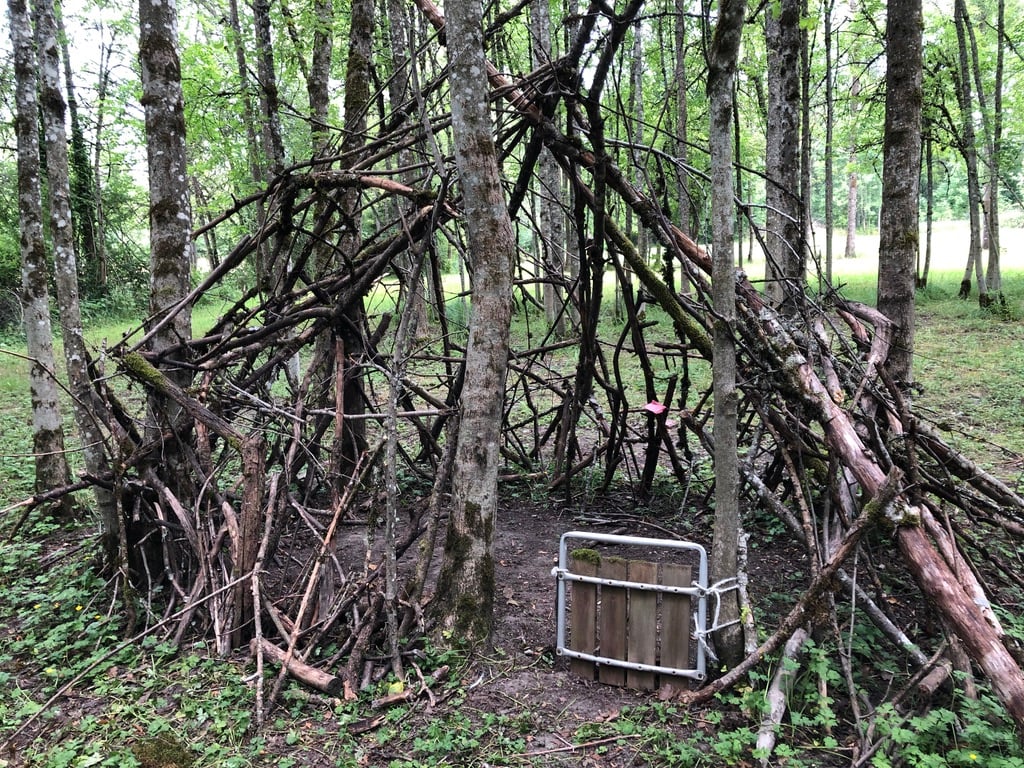
The original playground: children outside
Studies digging into the impacts of children in nature are far reaching. Playing outside can improve kids’ physical and mental health, strengthen their social development, as well as bolster their language and communication skills (Scott et al. 2022).
In one study, high school students performed better on tests while sitting in classrooms that featured green views versus windowless ones or windows that featured only a peek of another building (Li and Sullivan 2016). “Green activities” outdoors may influence kids’ attention and their ability to sustain it (Kuo and Taylor 2011). Early exposure to nature might also nurture the roots of environmental awareness (DeVille et al. 2021).
Far beyond children simply experiencing the benefits of outdoor environments themselves, there are important, healthy risks inherent in playing outside away from adults. These circumstances allow kids to make independent judgements and test their limits while learning about their capacities along the way. When they play freely and take these risks, children experience better mental health, greater self-reliance, and fewer learning, perception, and judgment skills deficits (Eager and Little 2011).
More grown-up time, less nature
While the natural pull for young people to be in close relationship to the outdoors has never wavered, and the benefits of it are now well established, a set of cultural shifts beginning in the late 1980s gradually reduced the hours they spent outside. Intensive parenting led adults to increase their oversight of kids and reduce or eliminate many perceived risks, including those assumed to take place outside in the woods, on hilly expanses, and high up in trees.
As parents came to prioritize caution and vigilance, they discouraged some of the vital connections kids make with the natural world when left to their own internal rhythms and impulses. In time, a greater emphasis on academics—alongside increased grown-up perceptions of physical dangers outdoors—overshadowed the value of play, explained Mariana Brussoni, a professor in the Department of Pediatrics and the School of Population and Public Health at the University of British Columbia.
Ironically, Brussoni’s research has revealed that despite lingering fears that the outdoors poses a host of risks for children, statistics suggest that for most nations, it has never been safer outside. Most recently, she added, the increase in screen time has also increased the hours children are engaged inside.
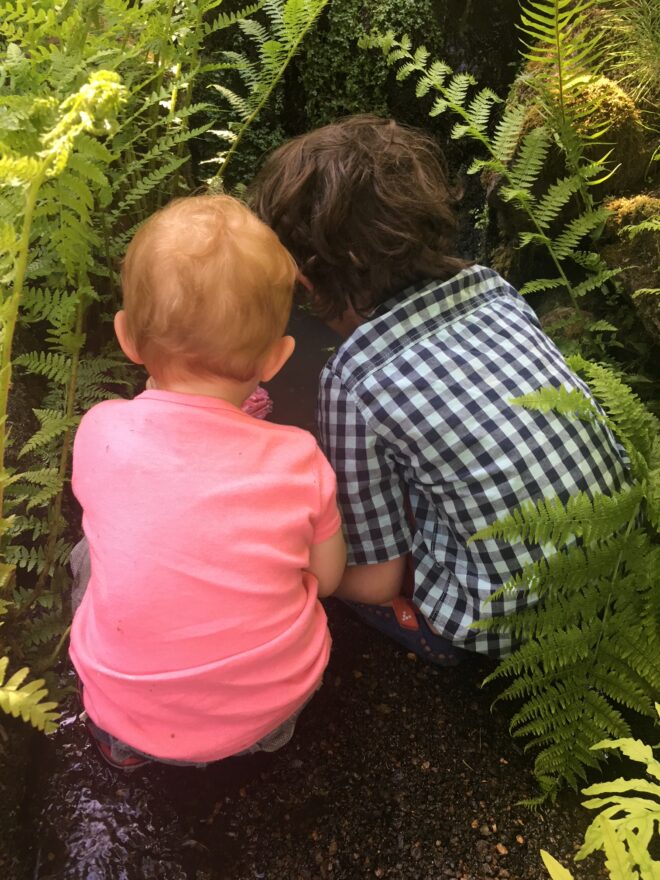
The limitations of outdoor play structures
Prefabricated play structures, typically designed by adults and constructed to provide children with “safer” outside play environments, often under grown-up supervision, unfortunately fall well short of meeting kids’ developmental needs. Susan Herrington, a professor in the School of Architecture and Landscape Architecture at the University of British Columbia, led a study of 16 outdoor childcare center spaces there for kids ages 2–5 (Herrington and Lesmeister 2006). The results shed light on just how little the children she focused on made use of such structures.
“In my study … the equipment was there every day all day, never really changing,” she explained. “The children became bored because they could not manipulate it. It was often the most expensive item in the outdoor play space, but not used 87 to 88 percent of the time. Outdoor play spaces with plants and natural elements that children could manipulate have a much longer staying power for interaction because they change over time.”
Given a choice, as opposed to tidier adult creations, children in Herrington’s study preferred spaces that had components they could play with in open-ended ways, that were not centered around a fixed theme, that were scaled appropriately for children, that included living things, and that were sensitive to climate variables like sunlight.
Exploring the outdoors at home
Though powerful forces may prevent a full-fledged return to the free-range childhoods of the past, if families are flexible and willing to allow their children a bit of space, backyards can open up remarkable opportunities. With their kids playing nearby, adults can rest in the knowledge that everyone is probably still within earshot of one another. Kids, meanwhile, can wrest back some of their outdoor independence and become increasingly comfortable in their own personal corner of the natural world.
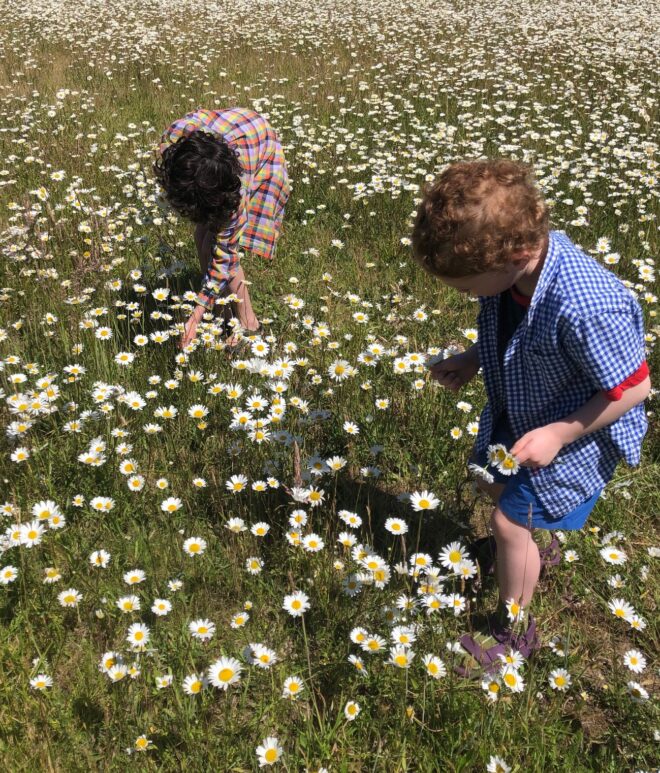
In addition to promoting freedom and imagination for their children, backyard spaces for kids should liberate parents, too, from adding an overly ambitious yard project to their to-do list. The goal is not to create an extension of the adults’ outdoor area. “Parents shouldn’t plant gardens that they don’t want their kids to play in, if their aim is to support play,” Brussoni said. “You’d be surprised how often people plant these beautiful gardens ‘for kids’ but then don’t allow them to play in them.”
The goal, stated simply, is to designate a space—or a few—in your yard, provide some open-ended materials, and ultimately let the child take some ownership. Brussoni suggested that involving your children in both the plotting and construction stages, including any plantings, will establish the area as one truly intended for them. “They feel so much more connected and take their stewardship role more seriously,” she said.
If parents feel ambitious and their kids are receptive, they can always add elements—think rock walls, rope swings, or an oversized drainage pipe—but more is not necessary. Kids will make brilliant use of nearly anything interesting that is provided or that they can readily source on their own.
Begin with loose parts
Whether your family yard is a humble green postage stamp or a luxurious rolling plot, landscape architects who design for children and those who study their preferences suggest one element to transform any outdoor space into an open-ended wonderland: loose parts. Loose parts are as simple as they sound—an assortment of natural and manmade materials children can use to create endless narratives and physical assemblages, putting them squarely in charge of their own ever-changing outdoor world.
Play spaces with loose parts may include sticks, mud, rocks, sand, boxes, crates, and tarps, Brussoni said. Such parts “can provide incredibly rich play opportunities … and can be moved around by kids and they can use their imagination to shape the play,” she said. Families with small patios or courtyards only can rely heavily on smaller loose parts, if they choose, and still open up a world of enchanting imagination for children.
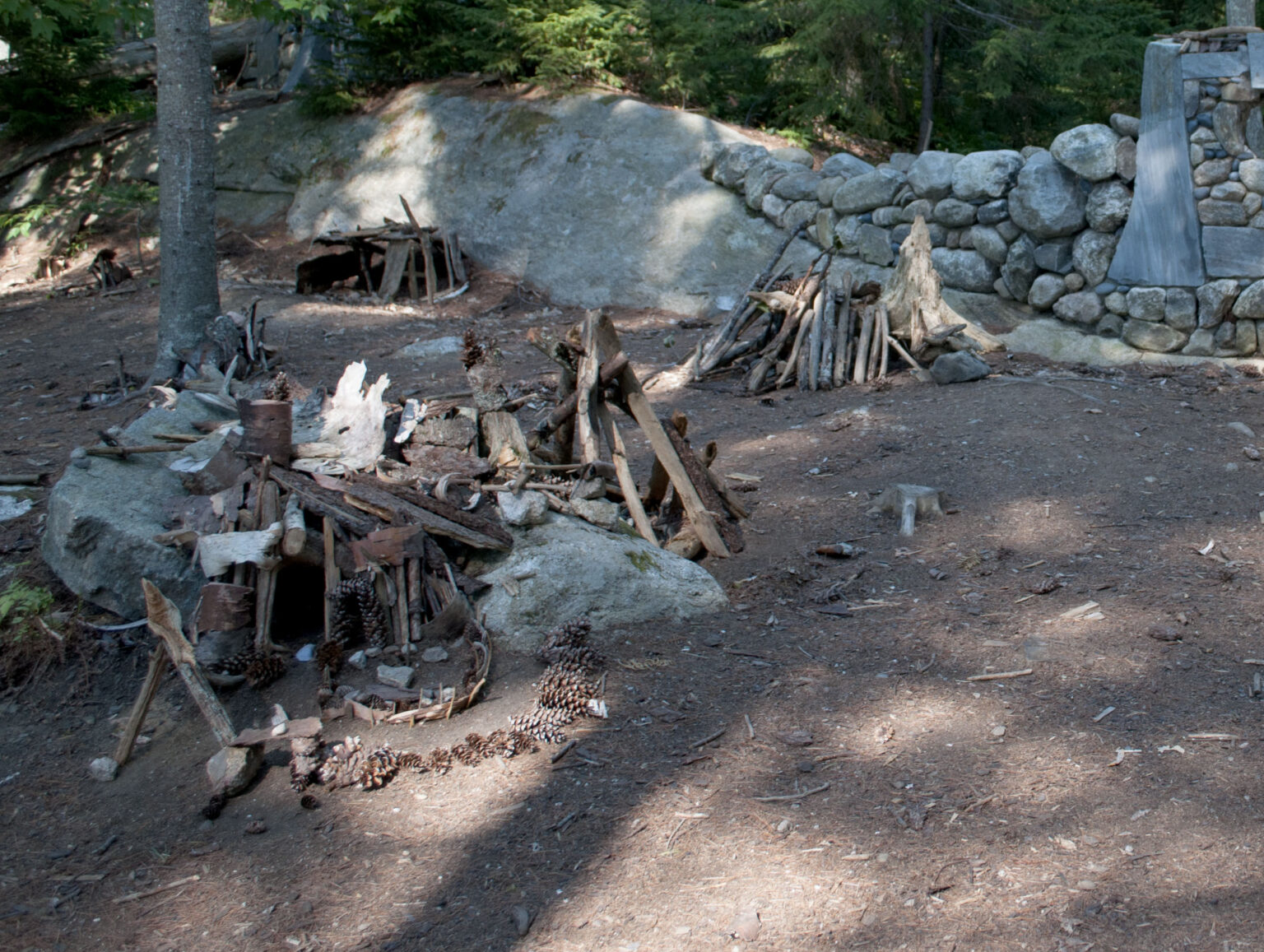
Adults can provide a mix of items and rotate them in or out. One day, children may use a set of tree stumps and longer boards to create balance beams or make a shelter or a life raft with a pile of sticks. On another day, kids may create a tiny bug or fairy garden with sticks, pebbles, mosses, and grasses they can weave together. Loose parts need not cost a thing if you take some time to look around your house and property for what you can contribute.
Enchant with plants
Plantings can be an invitation of many sorts for children. A few hardy perennials, thoughtfully placed, can create a distinct sense of place kids may gleefully claim as their own. “As a parent I’d learned early on about ‘yes spaces,’ the concept of designating spaces where children can explore through independent, open-ended and unguided play without interruption or limitations. It can be tricky to unleash kids into a tended garden where there is design and order, but it can be so worthwhile.” Adinah D’Andrea, propagation lead at Xera Plants Inc. explained. “Kids are really no different than adults in our fascination with plants, their vast complexities, their lessons and wondrously wild attributes. There are innumerable species to plant for fun creative sensory play, kids just need freedom to be truly immersed and allowed to manipulate the space, rip leaves, bury treasure. Resilient plants will hopefully persist!”
Families can choose plants to appeal to children’s senses, or decide to focus on natives, or a vibrant color palette, or spotty foliage, or varied textures, from plush downy leaves to ones that bristle. “Adding regionally native plants to the home garden is a wonderful way for kids to grow a deeper sense of place, recognition and relation to the land they inhabit,” D’Andrea said. “Olfactory memory of fragrant blooms lasts a lifetime for many of us. Fragrance in the garden is such a fantastic sensory experience to share with kids and often that memory is a lifelong connection to a place in time.”
Adinah D’Andera on her Manzanita (Arctostaphylos) memories; ‘My childhood secret garden hideaways were under the canopy of A. viscida groves in the Siskiyou foothills and I adore that it’s the same for my kids, only under manzanita we planted in our urban garden. Of course there is an endless array of sturdy shrubs that kids can disappear under, slip into their imaginative realm and make a place of their own. Manzanita are special in that not only do they have a bit of a mythical quality in their form, they also offer up a generous supply of dainty flower cup confetti, berries to gather and wildly tactile peeling bark.’
Click here for more of D’Andrea’s plant recommendations for a kid-focused corner of the garden.
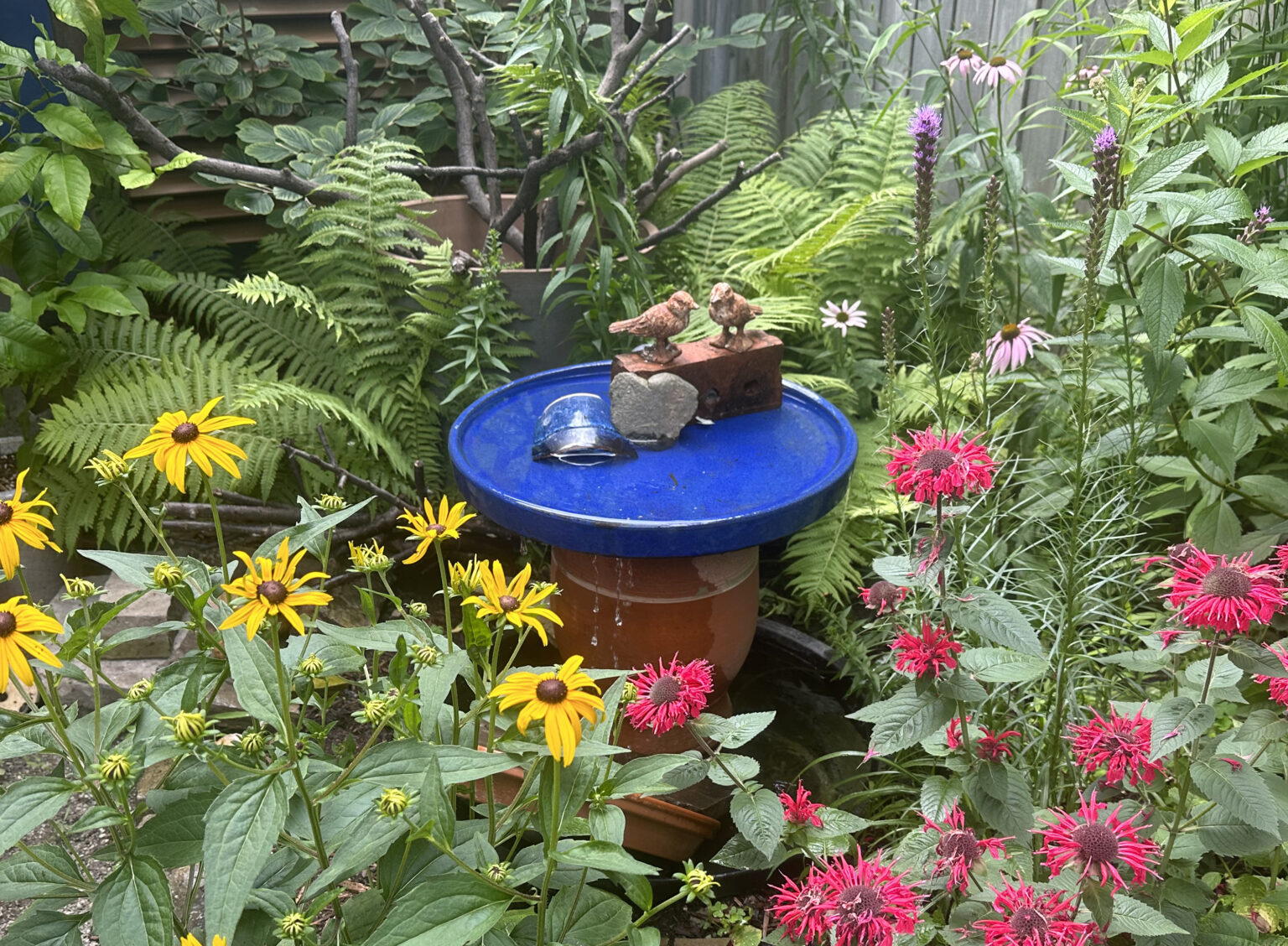
If plants can be manipulated, picked, or used as props, kids are far more likely to engage with them. “Plants not only modify the climatic conditions and provide light shade, but the flowers, seeds, and leaves produced by this living material can provide open-ended play props for children,” Herrington said. One of her classes planted soft, downy little bunny tails (Lagurus ovatus) plants in a maze formation; kids might enjoy playing in and around a labyrinth, too. Noxious weed killers and insecticides should be avoided at all turns in a children’s designated plant space and ideally in the family yard at large.
Offer nooks and crannies
Children (and many adults, if they are honest with themselves) are drawn to unique, tucked-away spaces outdoors. A tarp or a sheet and some sticks and twine allow children to create their own special hiding spots suitable for a variety of green spaces. Parents with enough space can help establish more permanent options by putting in fast-growing plants like willow, which they can form, like a living sculpture, into a tunnel or fort with the help of their children. Beanpole garden tents, in summer, can be a fun place for kids to hide, escape the heat of the midday sun and offer built-in delicious snacks.
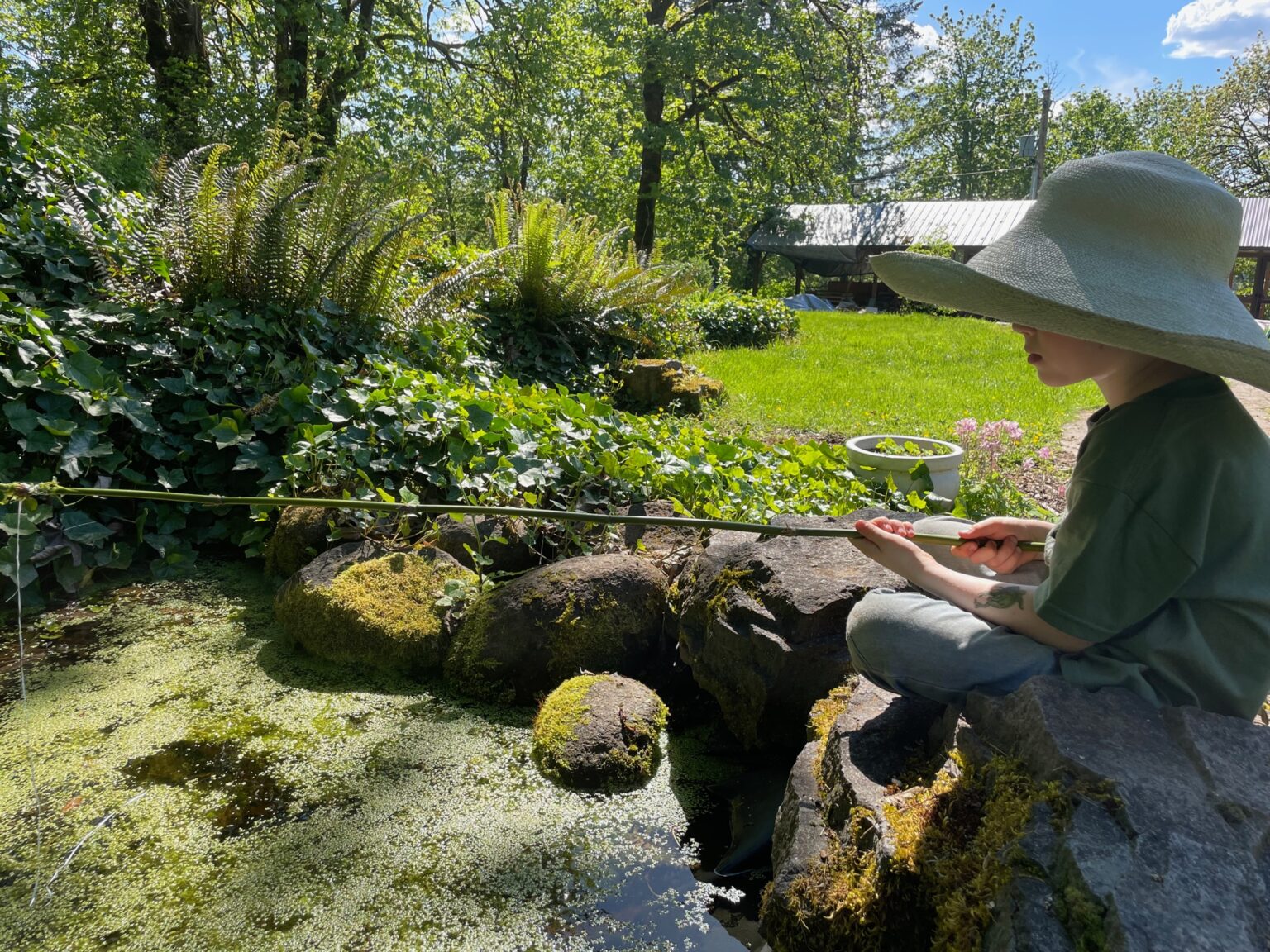
W. Gary Smith, an artist and renowned landscape architect of children’s botanical gardens throughout North America, has created many magical, open-ended nooks in his projects. In Enchanted Woods, part of The Winterhur Museum, Garden and Library in New Castle County, Delaware, Smith placed a series of salvaged columns from a 1960s rose arbor in a ring formation now known as The Acorn Tearoom. “It’s broken and a little ramshackle,” he said. “It’s not pristine. But it’s got a miniature table and miniature chairs. Kids can sit there and pretend they’re fairies having a tea party.”
Smith suggests that outdoor hideaways can even appeal to teenagers—something that many public gardens struggle to do. “Just having a space that feels like it’s theirs is so important. Sometimes they may want to be there and not be too active. Kids of all ages just want to hang out sometimes.”
Add some water
Water—pouring it, mixing it with things, cooling off with it, watching it flow—is endlessly captivating. Even in tiny gardens, adults can offer water to children in creative ways that take up little space. Parents could start by providing an inexpensive rubber feeder from a farm supply store filled with water that children could add loose parts to, or make a small pond in the dirt, or dip their feet into. Slightly more elaborate setups could involve a hose and a hand pump, which can go a long way and provide challenging fun, Herrington said. Some sand alongside water will increase the play possibilities exponentially.
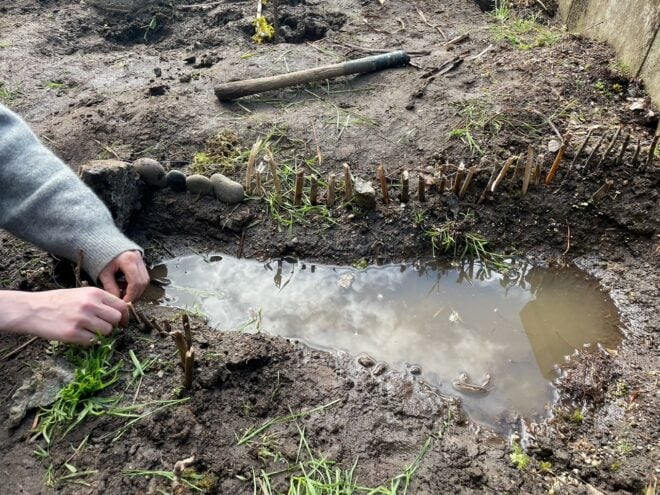
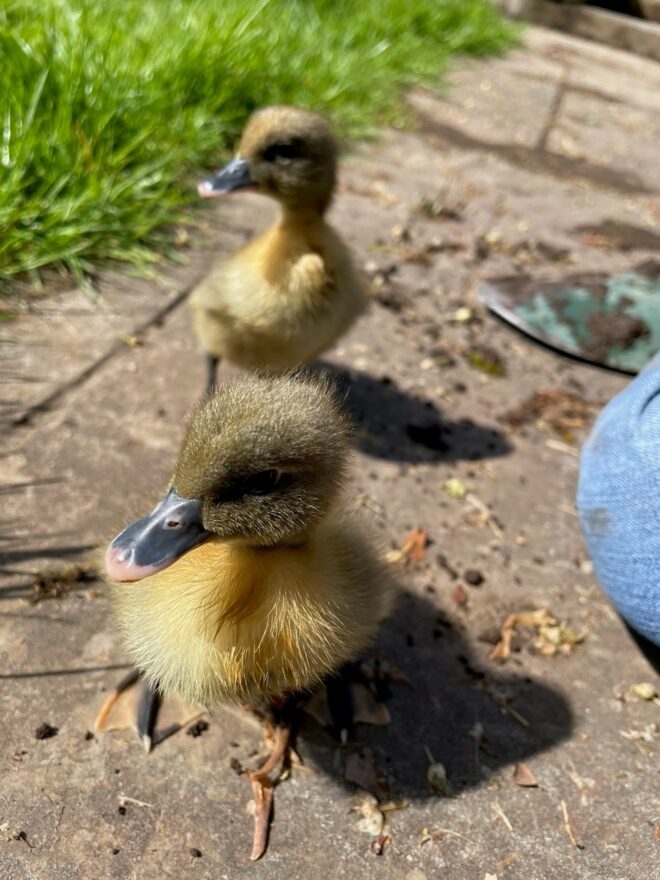
Though Smith has designed many elegant water features in his public gardens, he has an understated setup in his urban courtyard in Toronto that brings him regular joy. “I have a garden pool—a two-foot diameter plastic tub with a little submersible pump that runs a tiny fountain,” he said. “That can be all you need for a kid to play. I don’t have mine disguised to look like a pool … it’s a half-submerged plastic tub. I’m a landscape architect, too bad—mine is there for the birds! It’s a bucket of water. The grown-ups might want something that looks like a natural pool but a kid doesn’t really care about that. It’s fun just to have some water to play in.”
Your kids will forge paths of their own making
Once children have an outdoor world of their own, parents can begin to encourage them to spend free time there without intrusion or major limit-setting, allowing for unencumbered imaginative play. Over time, kids will experience the invaluable upsides that being left to their own devices in nature allows.
Smith avoids installing educational signs whenever possible in his gardens to facilitate these kinds of open-ended, unfiltered experiences. “I don’t want to be didactic,” he said.
At Winterhur in Enchanted Woods, Smith created a massive bird nest that a resident arborist weaves discarded grape and bittersweet vines through every few years. Children access the nest via a ramp four feet up in the air, which goes through some hydrangeas. “There was one kid who loved to come through the garden because he’d decided that nest was a spaceship,” Smith said. “If there had been an educational plaque about birds, that would have been it, it would have been birds. So I think it’s important to inspire imagination and not just teach kids what we assume they need to know.”
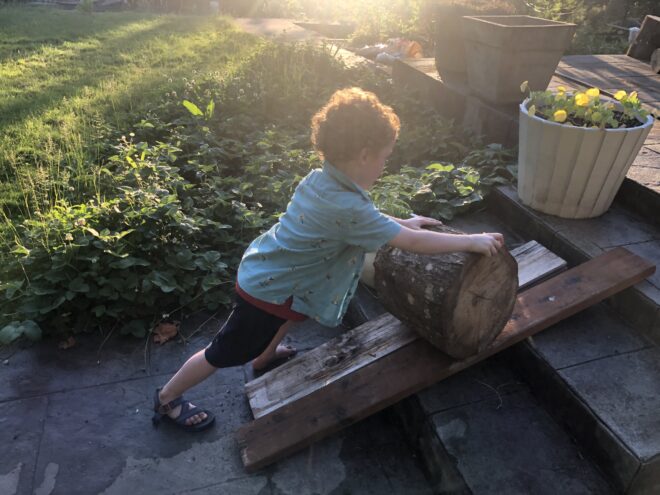
Because parents are a central part of the equation at home, it becomes all the more important to remind themselves to step back. “Children modify their play around adults—whether adults are actively involved or not—so in order to be totally free to explore their play and the opportunities it provides, they need to have a chance to play far away from adults,” Brussoni said. “This can give them a sense of independence … realizing that they can manage the challenges they encounter. That they can overcome these challenges, and that when things go wrong, they can handle that, too. You can imagine how fundamental these sorts of realizations are for all aspects of life,” she said.
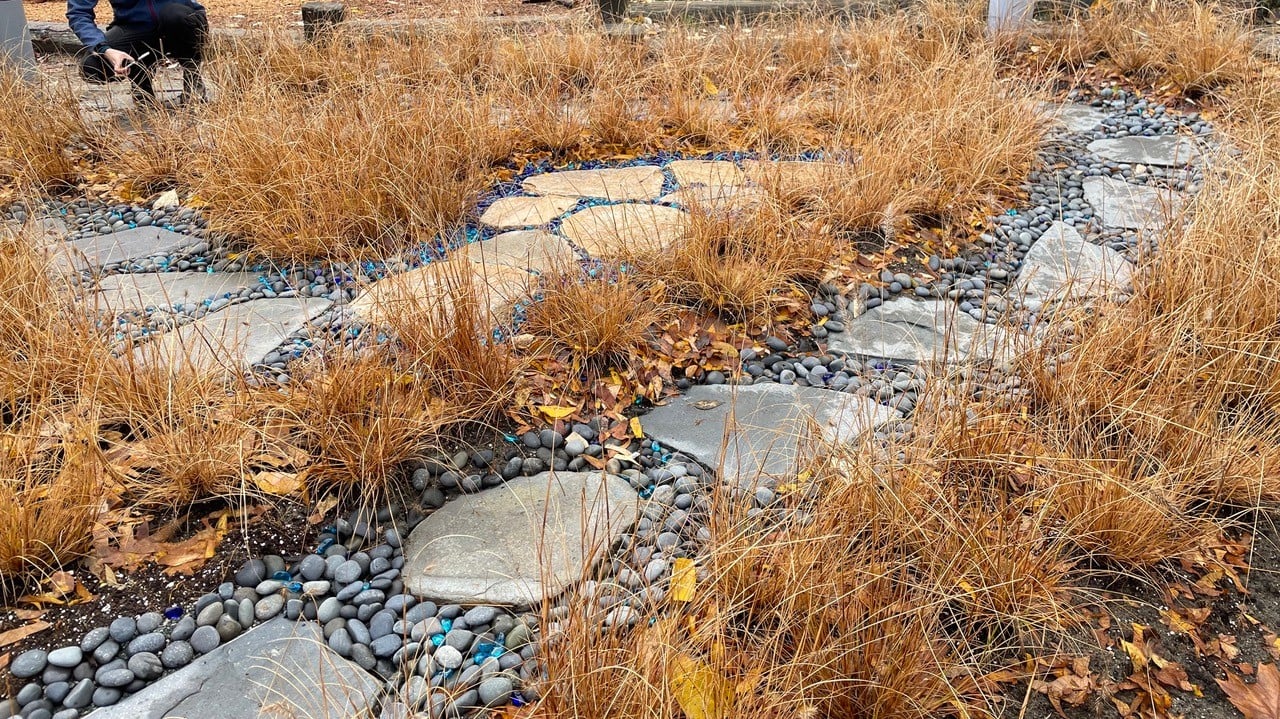
Families up for the adventure of handing over some outdoor space to the kids around them will enrich children’s lives in their own backyard retreats. The adults around them will be fostering something rare and all the more precious for that reason: children’s ownership over themselves and a tiny piece of this planet.
Resources
For further reading, see Richard Louv’s Last Child In The Woods (2008) and Nancy Striniste’s Nature Play at Home (2019).
The Green Desk at the North Carolina Design Natural Learning Initiative
Cohen, Danielle. 2023. “Why Kids Need to Spend Time In Nature.” Child Mind Institute. Last modified April 14, 2023.
DeVille, Nicole V., Linda Powers Tomasso, Olivia P. Stoddard, Grete E. Wilt, Teresa H. Horton, Kathleen L. Wolf, Eric Brymer, Peter H. Kahn Jr., and Peter James. 2021. “Time Spent in Nature Is Associated with Increased Pro-Environmental Attitudes and Behaviors.” International Journal of Environmental Research and Public Health 18 (14): 7498.
Eager, David and Helen H. Little. 2011. “Risk Deficit Disorder.” In Proceeding of IPWEA International Public Works Conference. Canberra, Australia, 21–24 August.
Herrington, Susan and Chandra Lesmeister. 2006. “The Design of Landscapes At Child-Care Centres: Seven Cs.” Landscape Research 31 (1): 63–82.
Kuo, Frances and Andrea Faber Taylor. 2011. “Could Exposure to Everyday Green Spaces Help Treat ADHD? Evidence from Children’s Play Settings.” Applied Psychology Health and Well-Being 3 (3): 281–303.
Li, Dongying and William C. Sullivan. 2016. “Landscape and Urban Planning Impact of Views to School Landscapes On Recovery from Stress and Mental Fatigue.” Landscape and Urban Planning. 148 (April).
Scott, Steph, Tonia Gray, Jenna Charlton, and Sharon Millard. 2022. “The Impact of Time Spent in Natural Outdoor Spaces on Children’s Language, Communication and Social Skills: A Systematic Review Protocol.” International Journal of Environmental Research and Public Health 19 (19): 12038.










Responses